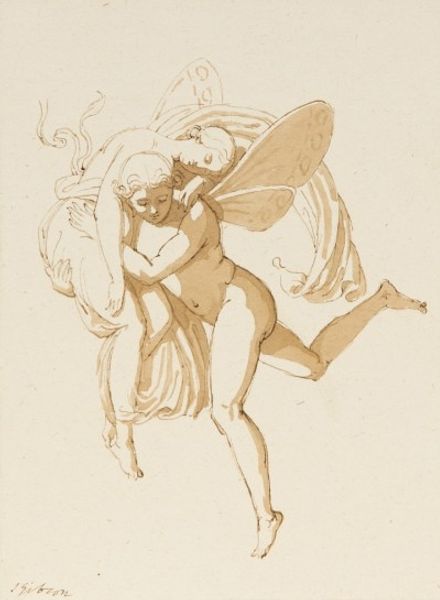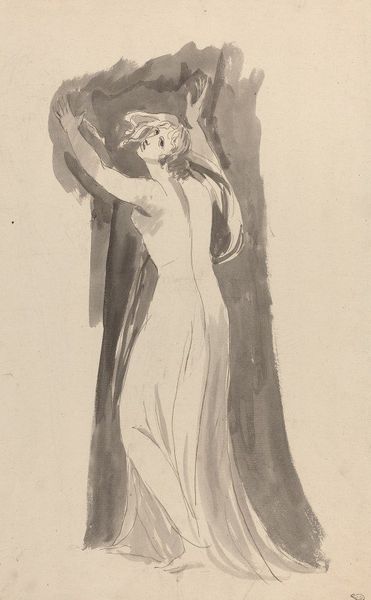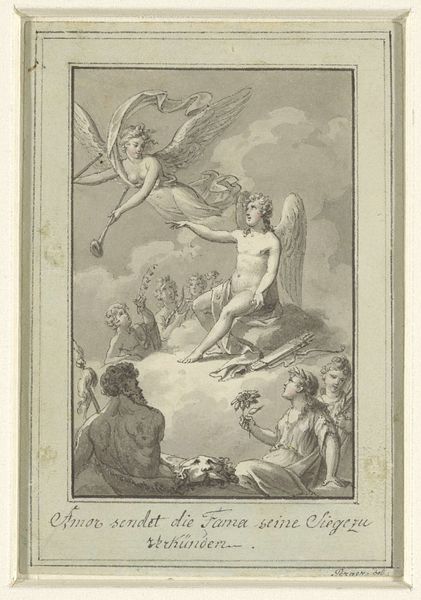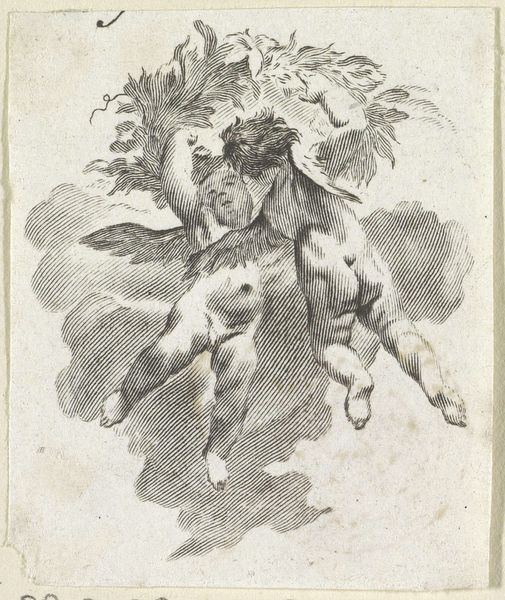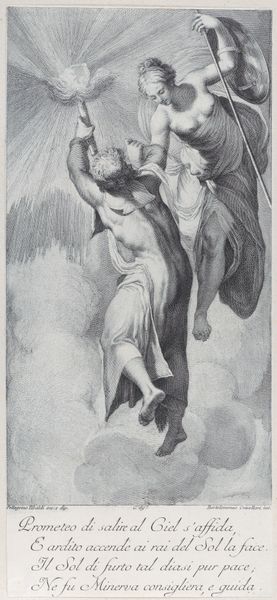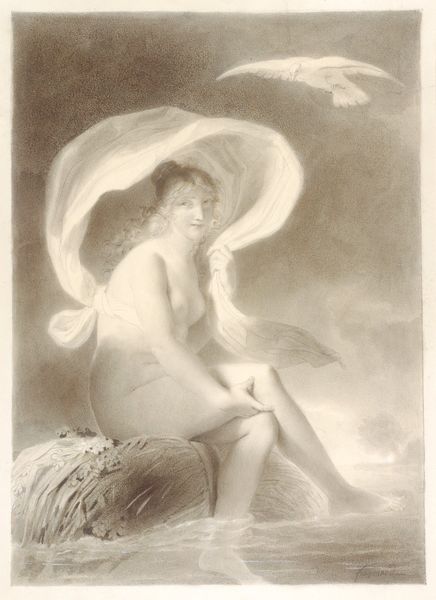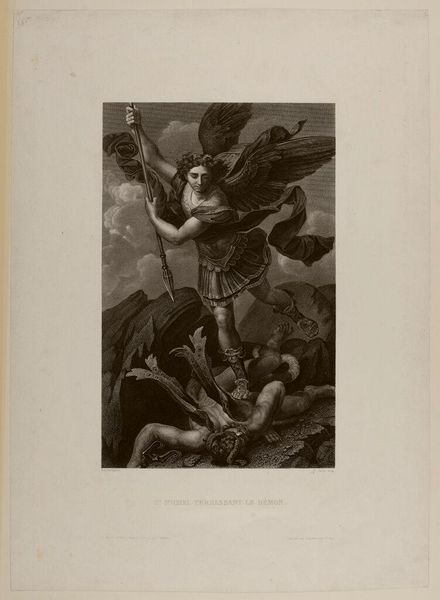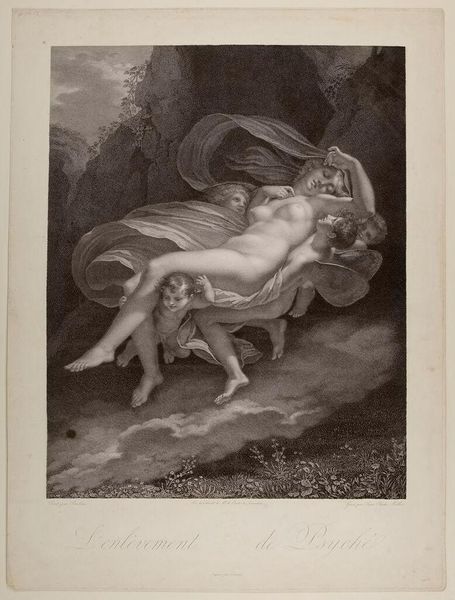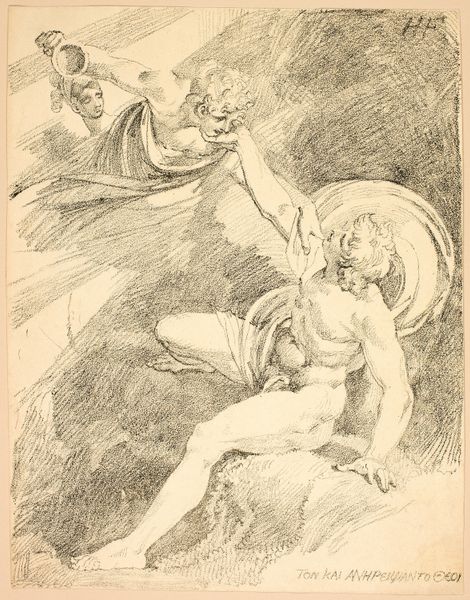
drawing, pastel
#
drawing
#
art-nouveau
#
allegory
#
figuration
#
pencil drawing
#
pastel
Copyright: Public Domain: Artvee
Editor: This is Jules Chéret's "The Dance," created in 1893, using pastel and drawing. It's wonderfully airy, almost ethereal. What compositional elements stand out to you in this work? Curator: The most salient feature is its masterful control of line and tone. The sepia hues establish a cohesive visual field. Chéret has artfully orchestrated a dynamic arrangement where each figure interacts, despite the variation in rendering. Note how the central dancer's figure exhibits sharper focus. How does this differential in clarity affect the overall visual experience? Editor: It does create a focal point, making her stand out while the others recede almost into memory. I’m struck by how the light seems to define the figures, particularly her gossamer gown. Curator: Indeed. Light not only defines form but seems to emanate from within. The linear quality and subtle modeling enhance the illusion of movement, contributing to its dynamic effect. It's an exquisite exercise in form following function. How does this emphasis on formal qualities shape our understanding? Editor: I suppose it draws attention to the skill and technique behind the artwork, rather than focusing on potential narratives. It almost feels like we're asked to appreciate the aesthetic qualities first and foremost. Curator: Precisely. This focus underscores a critical consideration: the intrinsic aesthetic values inherent in art, often eclipsing overt narrative. It really makes you reconsider how to view artwork. Editor: It really does. I've learned a new way of looking at artworks by focusing on how it looks rather than just what it means.
Comments
No comments
Be the first to comment and join the conversation on the ultimate creative platform.

